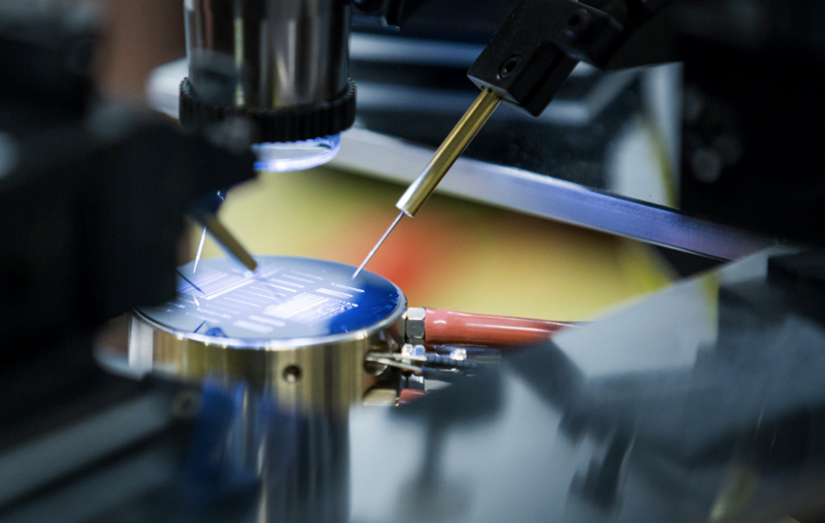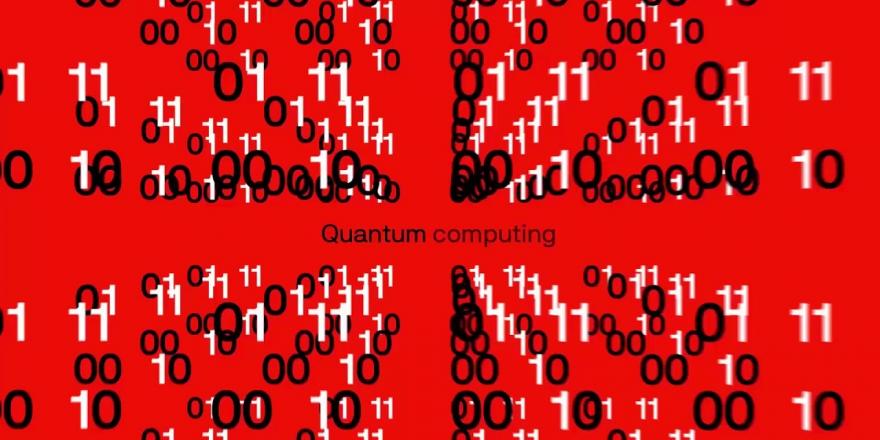'Stellar result' for UTS in research quality assessment
The Australian Research Council’s national review of research quality has rated all of UTS's research at world standard or better, with about 70% of its research considered above or well above world standard.

Two needles soldering onto a microchip under microscope.
Picture by Andy Roberts
Today’s results mean UTS has recorded an upward trajectory in all four in the Australian Government’s Excellence in Research Australia (ERA) assessments undertaken since 2010.
“Through an unremitting focus on excellence and impact, UTS research has been on an amazing upward trajectory over four successive ERA assessments,” UTS Vice-Chancellor, Professor Attila Brungs, says.
“Our many outstanding academic and professional staff should all be incredibly proud of this stellar result.
“Through investment and partnering we’ve increased our research outputs by a massive 50 per cent since the 2015 assessment, while significantly improving the quality of our research, such that all broad fields of research are now rated at or above world standard.”
Professor Brungs noted this growth was “always only in areas where we can deliver excellence or make a difference”.
The ERA evaluation rates research quality at the 39 Australian universities against an international standard.
World-standard research is rated at level 3. Research above world standard is rated at band 4, and research well above world standard at band 5. Research below the international standard receives a 2 (below) or 1 (well below).
Ratings are done at both the broad subject (2-digit) level and underneath that for specific fields of research (4-digit) level.
The data inform the government’s strategic research investment decision-making process.
Drilling down into the four-digit field of research level, 72 per cent of UTS research was rated in the two highest bands, as above or well above world standard – a 10 percentage points rise on the previous review in 2015.
The ERA assessment quantifies what we know to be true – that UTS researchers are working at a remarkably high standard, which is making a very real and positive impact upon the world in which we live.
Professor Kate McGrath
Deputy Vice-Chancellor, Research
UTS achieved 19 ratings of ‘5’ – well above world standard – up from 10 ratings being at this level three years earlier.
UTS has developed impressive depth to its research as a direct result of deliberate, strategic investment in growing research capacity, Deputy Vice-Chancellor, Research, Professor Kate McGrath, says.
“Two clear examples of this strategic investment are Quantum Physics and Ecological Applications,” she says. “In the 2015 assessment we didn’t receive a rating at all in these disciplines due to a low quantum of research outputs. In this latest assessment, not only did both get a rating, they each received a ‘5’ – signifying research quality well above world standard.”

Two digits have gotten us far.
But the evolution of innovation demands a revolution.
What if binary was just the beginning?
And the space between two digits holds the key to our future?
Computing power has reached its limit.
We've made things as small as they can get.
A new frontier.
[programming code scattered across the screen]
A new language.
A new era of software, of computing.
From definite states, to superpositions of states.
States of exponential power.
Quantum computing.
Computers 100 million times faster than yours.
Stored in temperatures colder than deep space.
Processors so powerful.
The future is being invented today.
Cures for diseases
Unbreakable encryptions
Artificial intelligence.
Power machine learning.
Astronomy.
Engineering.
Finance.
Logistics.
Climate change.
This is the next chapter in our evolution.
How will you define the future?
UTS.
Faculty of Engineering and IT.
In addition, a number of research teams have been consistently excellent over many assessments, Professor McGrath says, such as Nursing; Human Movement and Sports; and Econometrics – all of whom have received a ‘5’ in each of the past three assessments.
“The growth in our research capacity will in turn result in much greater impact when it comes to applying our research to the benefit of our society and the economy,” Professor McGrath says.
Some examples of this include Condensed Matter Physics, where UTS has led the design and development of innovations in heat control, cool paints, solar cells, signage, windows, skylights and lighting systems.
“Benefits from these products continue to be felt in the building industries in Australia and around the world and have resulted in new performance assessment methodologies, ‘star ratings’ and emerging building standards, all aimed at improving human comfort, saving energy and helping to mitigate against the worst effects of global warming,” she says.
Likewise, in Artificial Intelligence and Image Processing, UTS’s AI experts are teaming up with community and industry organisations to develop technologies to tackle online bullying.
“The ERA assessment quantifies what we know to be true – that UTS researchers are working at a remarkably high standard, which is making a very real and positive impact upon the world in which we live.”
